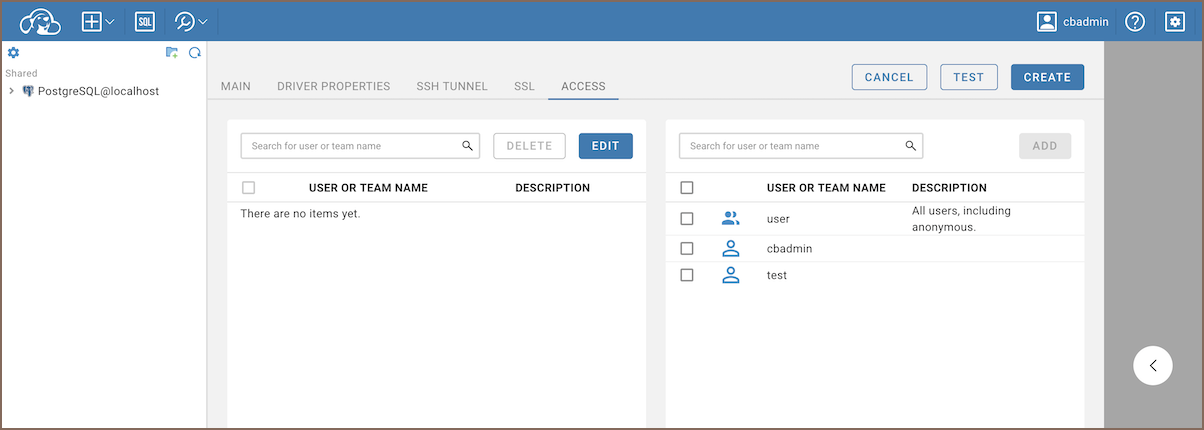-
Notifications
You must be signed in to change notification settings - Fork 402
Anonymous Access Configuration
Anonymous Access Configuration in CloudBeaver enables users to interact with databases without authentication. There are two methods for setting up anonymous access:
-
Administrator defined connections: Administrators can configure connections that are accessible anonymously, allowing access to these predefined connections.
-
Private connections: When enabled, this feature lets anonymous users configure their private connections from the main page. These connections are temporary and expire with the session.
By adhering to the settings below, CloudBeaver can be configured to allow anonymous access through both administrator-defined and user-customized connections.
Important: If the Allow anonymous access checkbox is not selected, the functionality for anonymous access is disabled, restricting the use of CloudBeaver to authenticated users only.
-
As an administrator, navigate to the Settings -> Server configuration.
-
Locate the Enable private connections option and activate this setting to allow the creation of connections by anonymous users.

-
Save changes.
Note: Connections created by anonymous users are not permanent. These connections will be terminated following the session expiration.
-
Start the process of creating a connection as an administrator. For detailed instructions, refer to the Create Connection article.
-
Navigate to the Access tab within the connection settings and click on the Edit button to modify access settings.

-
Choose
user(representing all users, including anonymous) from the list and click Add to include this user group in the access rights.
-
Once all the connection settings are configured, click the Create button to establish the new connection.
Note: If the administrator has enabled the Enable private connections option, anonymous access cannot be configured for that specific database.
- Application overview
- Demo Server
- Administration
- Server configuration
- Create Connection
- Connection Templates Management
- Access Management
-
Authentication methods
-
Local Access Authentication

- Anonymous Access Configuration
- Reverse proxy header authentication
- LDAP
-
Single Sign On

-
SAML

-
OpenID

-
AWS OpenID

-
AWS SAML

-
AWS IAM

-
AWS OpenId via Okta

-
Snowflake SSO

-
Okta OpenId

-
Cognito OpenId

-
JWT authentication

-
Kerberos authentication

-
NTLM

-
Microsoft Entra ID authentication

-
Google authentication

-
Local Access Authentication
- User credentials storage
-
Cloud Explorer

-
Cloud storage

-
Query Manager

-
Drivers Management

- Supported databases
- Accessibility
- Keyboard shortcuts
- Features
- Server configuration
- CloudBeaver and Nginx
-
Domain manager

- Configuring HTTPS for Jetty server
- Product configuration parameters
- Command line parameters
- Local Preferences
- API
-
CloudBeaver Community
-
CloudBeaver AWS
-
CloudBeaver Enterprise
-
Deployment options
-
Development